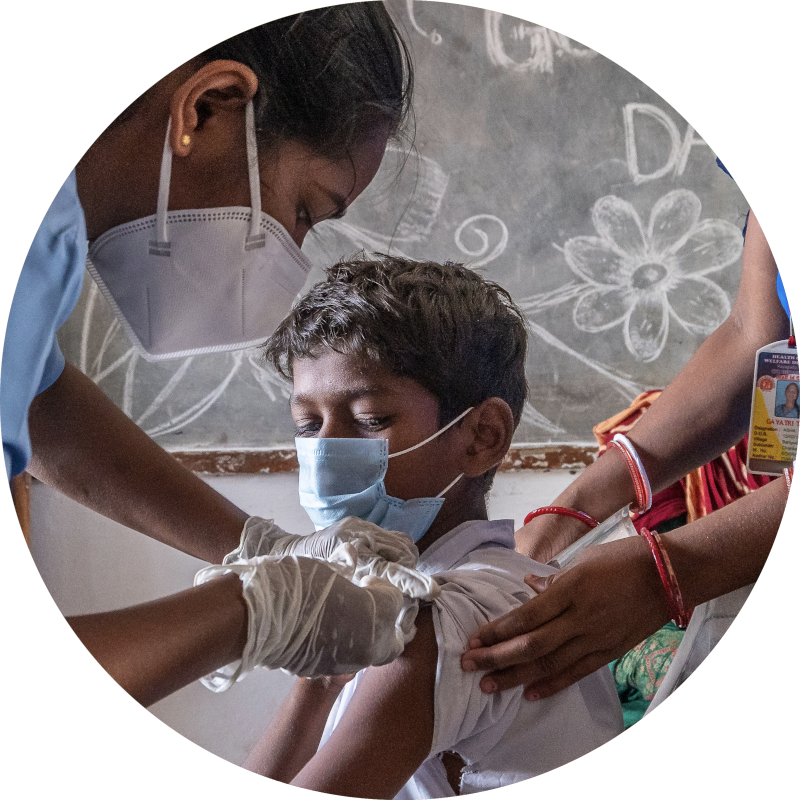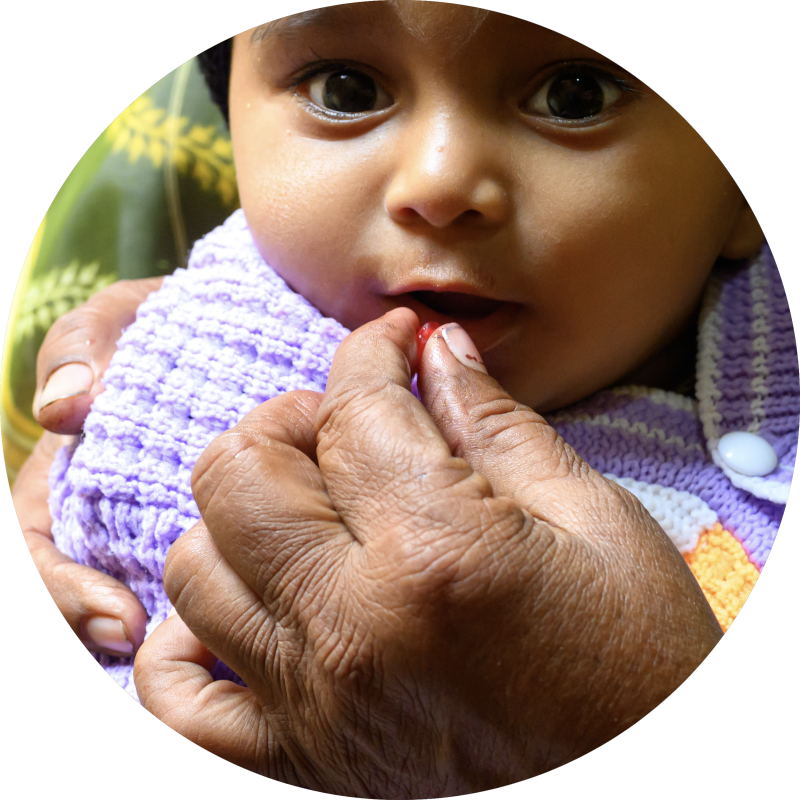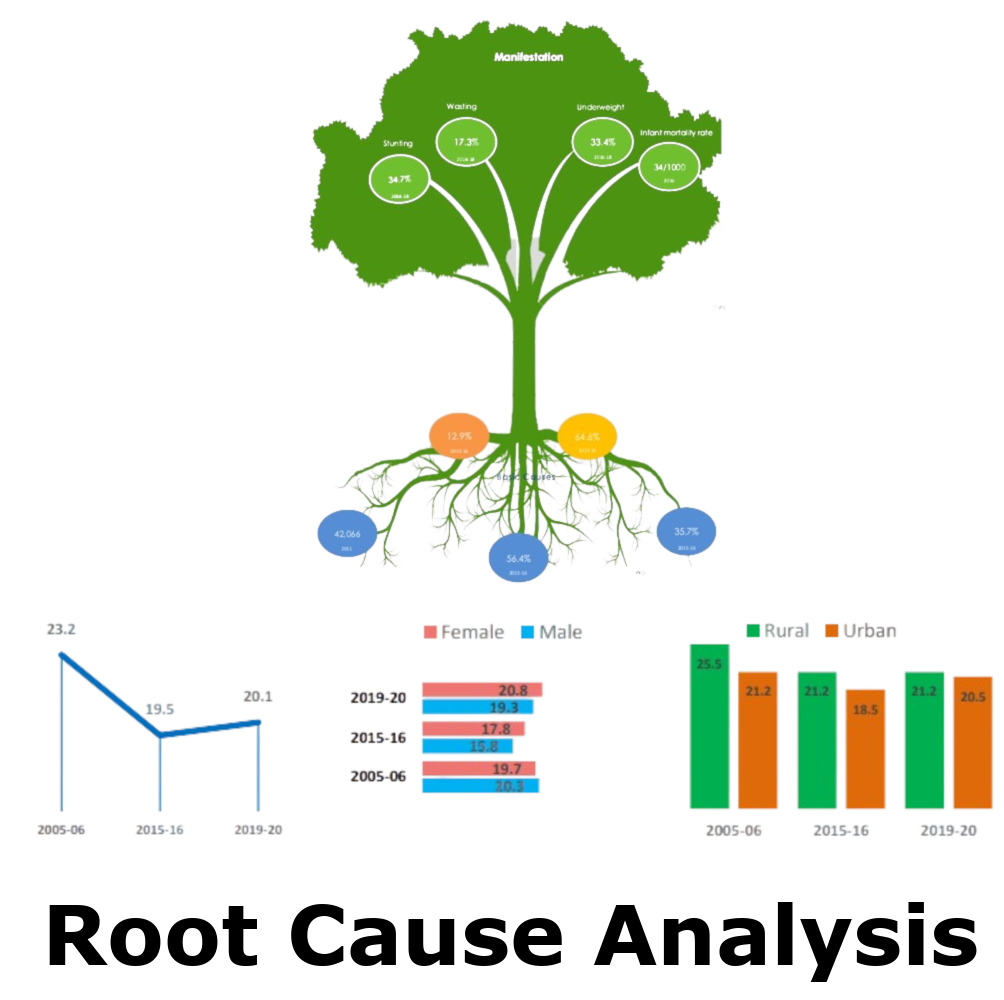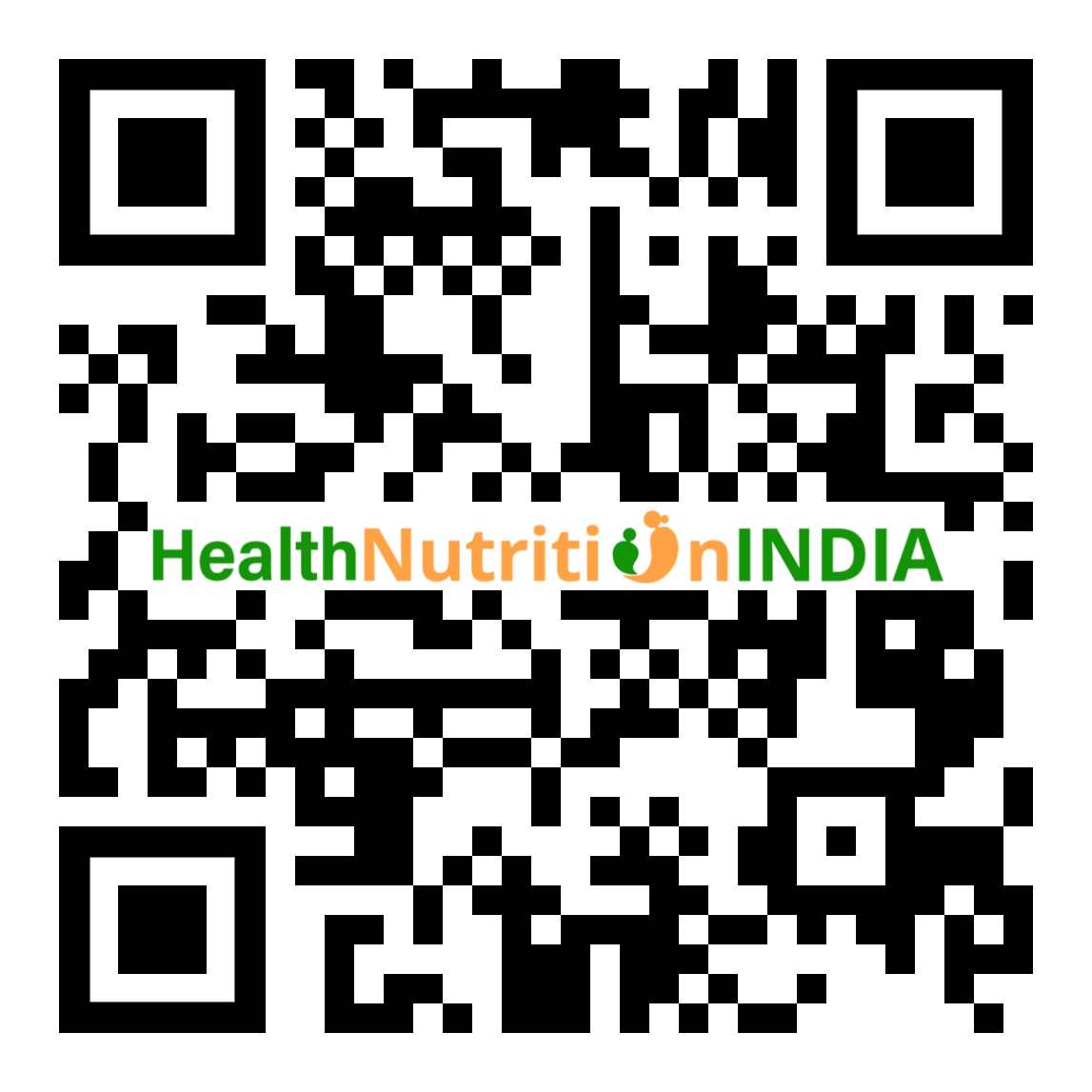
Lifecycles
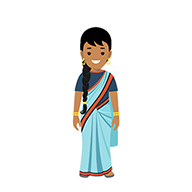
Adolescence

Women of Reproductive Age
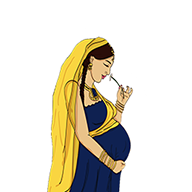
Pregnancy

Delivery/PNC

Early Childhood

School Age

Adolescence
The age group from 10-19 years of age is when children experience a second growth spurt and complete the physical and mental transition into adulthood. The needs for a diverse well rounded diet are greater during adolescence than at any other period in the life cycle, except pregnancy. Adolescence is the time to develop lifelong habits, such as a healthy diet and regular exercise to prevent undernutrition, anemia, micronutrient deficiencies, overweight/obesity and eating disorders.
Manifestation
Undernutrition, micronutrient deficiencies, overweight/obesity and diet-related noncommunicable diseases.
Anaemia (10-14 year girls)
Anaemia (15-19 year girls)
Blood Pressure (15-19 years)
Cholesterol (10-14 years)
Cholesterol (10-19 years)
Cholesterol (15-19 years)
Folate (10-14 years)
Folate (15-19 years)
High Blood Sugar (10-14 years)
High Blood Sugar (10-19 years)
High Blood Sugar (15-19 years)
High HbA1c (10-14 years)
High HbA1c (10-19 years)
High HbA1c (15-19 years)
Iron Deficiency (10-14 year girls)
Iron Deficiency (15-19 year girls)
Low BMI (15-19 year girls)
Overweight (15-19 years)
Triglycerides (10-14 years)
Triglycerides (10-19 years)
Triglycerides (15-19 years)
Vitamin A (10-14 years)
Vitamin A (15-19 years)
Vitamin B12 (10-14 years)
Vitamin B12 (15-19 years)
Vitamin D (10-14 years)
Vitamin D (15-19 years)
Waist Circumference (15-19 years)
Zinc (10-14 years)
Zinc (15-19 years)
Interventions
Essential public health and nutrition services to ensure the health and wellbeing of the population.
Family Planning
Unmet need
Unmet need for spacing
IFA Rx (15-19 year girls)
Determinants
Includes food, health, caring practices, social safety nets, hygiene/ sanitation and women�s empowerment.
Adolescents (10-14 years)
Adolescents (10-19 years)
Adolescents (15-19 years)
Bank/Post Office Account
BPL Card
Child Faeces Disposal
Clean Fuel
Electricity
Female Household Headship
Hand Washing
Health Insurance
Improved Toilet
Improved Water
Iodized Salt
Open Defecation
Population
Rashtriya Swasthya Bima Yojana (RSBY)
Solid Fuel
Women's Literacy

Women of Reproductive Age
This age group is normally defined as 15-49 years of age when women can give birth to children. Women�s nutrition is critical to ensure that she can reach her full potential. But her nutrition is also important for families and communities. When women are healthy and can access resources, they invest in the nutrition, education and health of their family leading to economic growth and development of societies.
Manifestation
Undernutrition, micronutrient deficiencies, overweight/obesity and diet-related noncommunicable diseases.
Anaemia
Asthma
Blood Pressure
High Blood Sugar
High Blood Sugar (Reported Diabetes)
Hip Circumference
Low Arm Circumference
Low Height
MMR
Obesity(BMI >30 Kg/m2)
Overweight
Thyroid
Treatment Asthma
Treatment diabetes
Treatment Thyroid
Waist circumference
Interventions
Essential public health and nutrition services to ensure the health and wellbeing of the population.
Contraception
Family Planning
Hypertension Rx
Hypertension Rx Treatment
Unmet need
Unmet need for spacing
Determinants
Includes food, health, caring practices, social safety nets, hygiene/ sanitation and women�s empowerment.
Bank/Post Office Account
Big Health Problems
BPL Card
Child Faeces Disposal
Clean Fuel
Contact Health worker
Domestic Violence
Early Childbearing
Electricity
Female Household Headship
Hand Washing
Health Insurance
Improved Toilet
Improved Water
Iodized Salt
Mobile Finanical Transactions
Open Defecation
Population
Rashtriya Swasthya Bima Yojana (RSBY)
Solid Fuel
Women Health Insurance
Women of reproductive age (15-49 years)
Women's Bank Account
Women's Education
Women's Empowerment
Women's Literacy
Women's Phone

Pregnancy
Pregnancy marks the beginning of the first 1000 days from conception to the 2nd year of the child. This period of intense physical growth and development demands a larger and more nutrient dense diet than normal. Poor weight gain in pregnancy can lead to low birth weight, increased risk of illness and developmental delays. Excess weight gain can lead to higher risk births. Healthy diets are associated with fewer pregnancy complications such as gestational diabetes and hypertension and a healthy childbirth.
Manifestation
Undernutrition, micronutrient deficiencies, overweight/obesity and diet-related noncommunicable diseases.
Anaemia
Blood Pressure
High Blood Sugar
Obesity
Overweight
Waist Circumference
Interventions
Essential public health and nutrition interventions are services to ensure the health and wellbeing of the population.
ANC (1+)
ANC (1st trimester)
ANC (4+)
ANC (weighed)
ANC Counselling
ANC from skilled provider
BF Counselling
Deworming
HIV counseling and test during ANC
HIV counseling during ANC
HIV test during ANC
IFA Consumption
IFA Consumption (100)
IFA Rx
Information on Pregnancy Complicaitons
Malaria prevention
Male aware of Pregnancy Complications
Male involvement during ANC
MCP Card
Neonatal TT
Pregnancy Complication Treatment Seeking
Pregnancy registration
Pregnancy TT
Supp Food
Supp Nutrition
Determinants
Includes food, health, caring practices, social safety nets, hygiene/ sanitation and women�s empowerment.
Bank/Post Office Account
BPL Card
Child Faeces Disposal
Clean Fuel
Electricity
Female Household Headship
Hand Washing
Health Insurance
Improved Toilet
Improved Water
Iodized Salt
Open Defecation
Population
Pregnant Women
Rashtriya Swasthya Bima Yojana (RSBY)
Solid Fuel
Women's Literacy

Delivery/PNC
The period from the delivery of a child to the end of post-natal care visits (PNC) are critical moments to ensure the health, nutrition and wellbeing for women and children. It is a time of both tremendous potential and enormous vulnerability. Institutional births help to ensure safe childbirth and can support the early initiation of breastfeeding within the 1st hour of life. Women continue to need a diverse and nutrient dense diet and appropriate health care to enable the physiological feat of producing breastmilk for her baby.
Manifestation
Undernutrition, micronutrient deficiencies, overweight/obesity and diet-related noncommunicable diseases.
Interventions
Essential public health and nutrition services to ensure the health and wellbeing of the population.
BF Counselling
Birth Registry
Clean Blade Use (Home Deliveries)
Cord Care
C-Section
C-Section (Private)
C-Section (Public)
Delivery costs
Early Initiation BF
Financial Asst.
Inst. Delivery
Inst. Delivery (Private)
Inst. Delivery (Public)
Men's Counseling on Breastfeeding
Men's Counseling on Family planning
Men's Counseling on institutional delivery
Men's Counseling on woman's nutrition
PNC (Babies)
PNC (Women)
Postpartum Complications
Provider Mother's PNC
Skilled Birth Attendant
Time C-section (After onset of labour pains)
Time C-section (Before onset of labour pains)
Determinants
Includes food, health, caring practices, social safety nets, hygiene/ sanitation and women�s empowerment.
Bank/Post Office Account
BPL Card
Child Faeces Disposal
Clean Fuel
Delivery/PNC Women
Electricity
Female Household Headship
Hand Washing
Health Insurance
Improved Toilet
Improved Water
Iodized Salt
Open Defecation
Population
Rashtriya Swasthya Bima Yojana (RSBY)
Solid Fuel
Women's Literacy

Early Childhood
Early childhood marks the second stage of the 1,000 days and a critical window of opportunity to shape a child�s growth and development. Early infancy presents some of the highest demands for a nutritious diet to enable the extraordinary physical and mental growth during the first growth spurt. Breastmilk is the ultimate superfood containing a full range of nutrients, growth factors and hormones vital for the child. After six months, solid foods are needed with continued breastfeeding and appropriate services to prevent anemia, micronutrient deficiencies, environmental enteropathies and childhood illness.
Manifestation
Undernutrition, micronutrient deficiencies, overweight/obesity and diet-related noncommunicable diseases.
Anaemia
IMR
Iron Deficiency
Low Birth Weight
MUAC <115 mm
MUAC <125 mm
NMR
Overweight
Severe Underweight
Severe Wasting
Stunting
U5-MR
Underweight
Vitamin A
Vitamin D
Wasting
Zinc
Interventions
Essential public health and nutrition services to ensure the health and wellbeing of the population.
ARI/Pneumonia Rx
Deworming
Full immunization
Growth Monitoring
IFA Rx
Nutrition Counselling
ORS Rx for Diarrhoea
Supp Food
Vitamin A Rx
Zinc Rx for Diarrhoea
Determinants
Includes food, health, caring practices, social safety nets, hygiene/ sanitation and women�s empowerment.
ARI/Pneumonia
Bank/Post Office Account
BPL Card
Child Faeces Disposal
Children (<5 years)
Clean Fuel
Continued BF
Diarrhoea
Electricity
Exclusive Breastfeeding
Female Household Headship
Hand Washing
Health Insurance
Improved Toilet
Improved Water
Intro Comp Foods
Iodized Salt
Median Duration EBF
Min Acceptable Diet
Min Dietary Diversity
Min Meal Frequency
Open Defecation
Population
Rashtriya Swasthya Bima Yojana (RSBY)
Solid Fuel
Women's Literacy

School Age
The period from 5 to 9 years of age when children start school has important nutrition and health needs which have often been overlooked. While growth has slowed following early childhood, the macronutrients and micronutrients needs for children are higher relative to body size compared to adults. Children need to protected against malnutrition, anemia and micronutrient deficiencies with appropriate diverse diets and health care in order to reach to their full educational potential.
Manifestation
Undernutrition, micronutrient deficiencies, overweight/obesity and diet-related noncommunicable diseases.
Anaemia
Cholesterol
Folate
High Blood Sugar
High HbA1c
Iron Deficiency
Overweight
Stunting
Triglycerides
Underweight
Vitamin A
Vitamin B12
Vitamin D
Zinc
Interventions
Essential public health and nutrition services to ensure the health and wellbeing of the population.
Determinants
Includes food, health, caring practices, social safety nets, hygiene/ sanitation and women�s empowerment.
Bank/Post Office Account
BPL Card
Child Faeces Disposal
Children (5-9 years)
Clean Fuel
Electricity
Female Household Headship
Hand Washing
Health Insurance
Improved Toilet
Improved Water
Iodized Salt
Open Defecation
Population
Rashtriya Swasthya Bima Yojana (RSBY)
Solid Fuel
Women's Literacy







